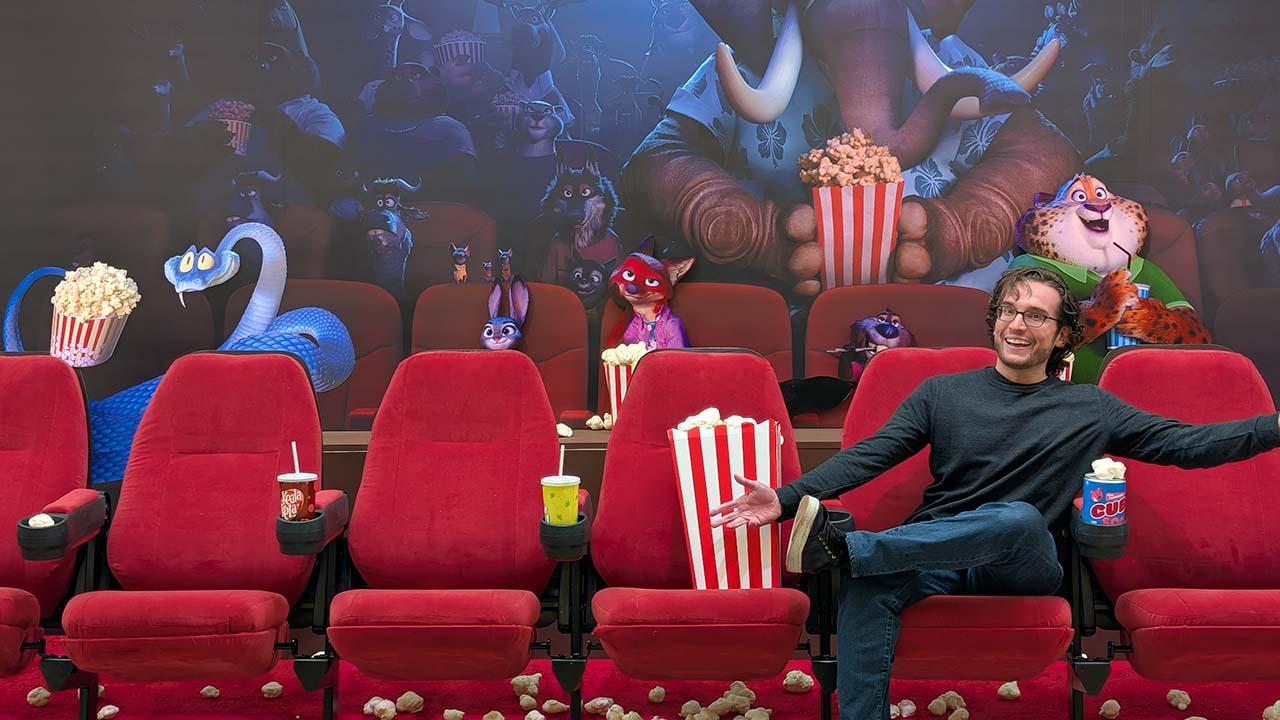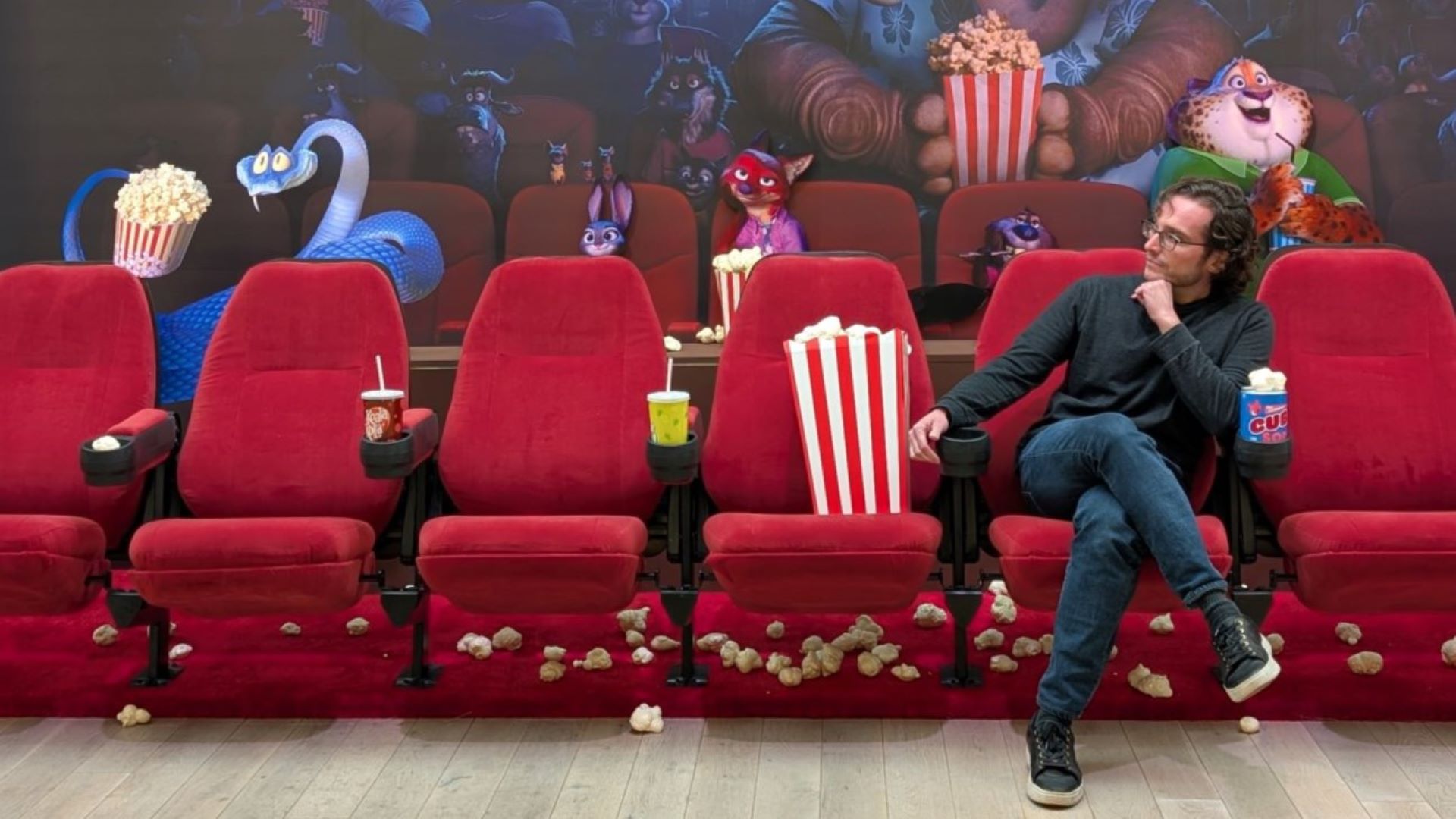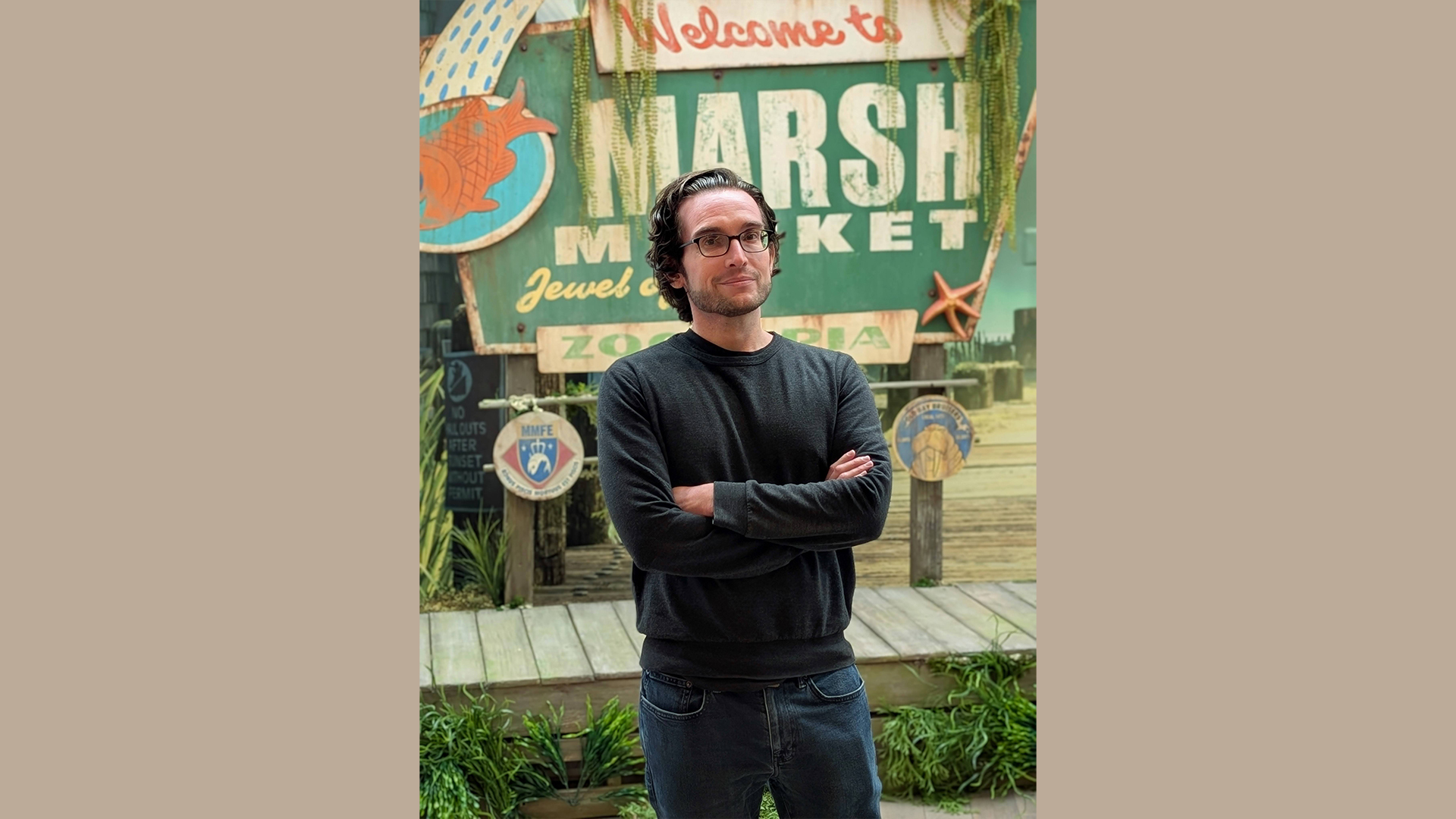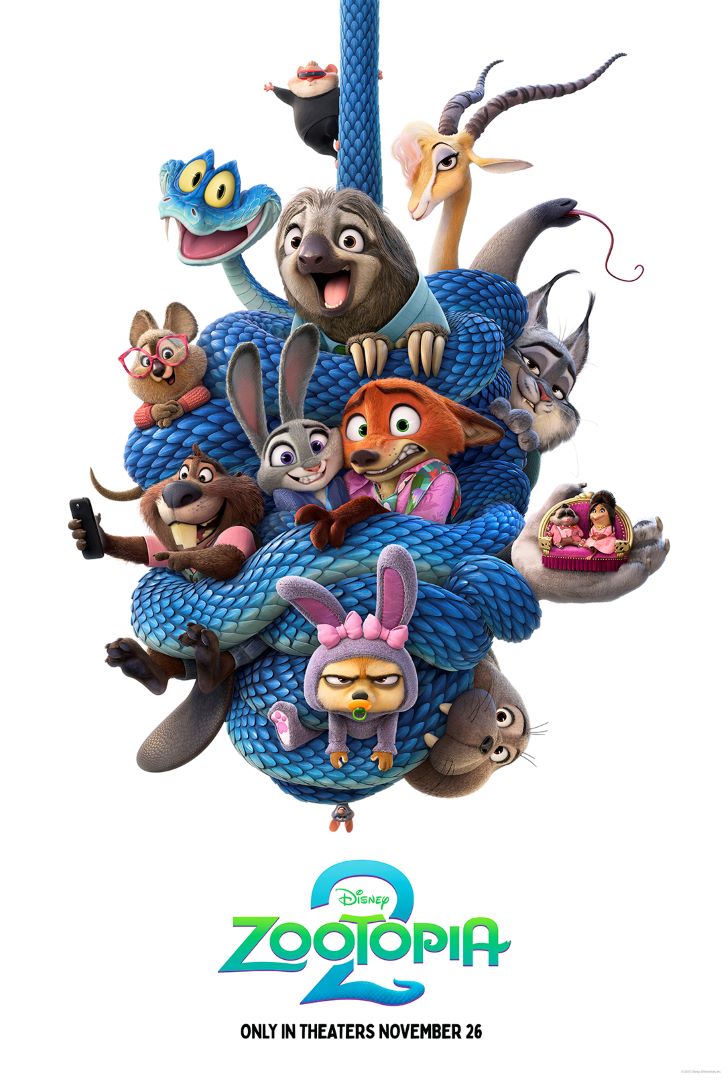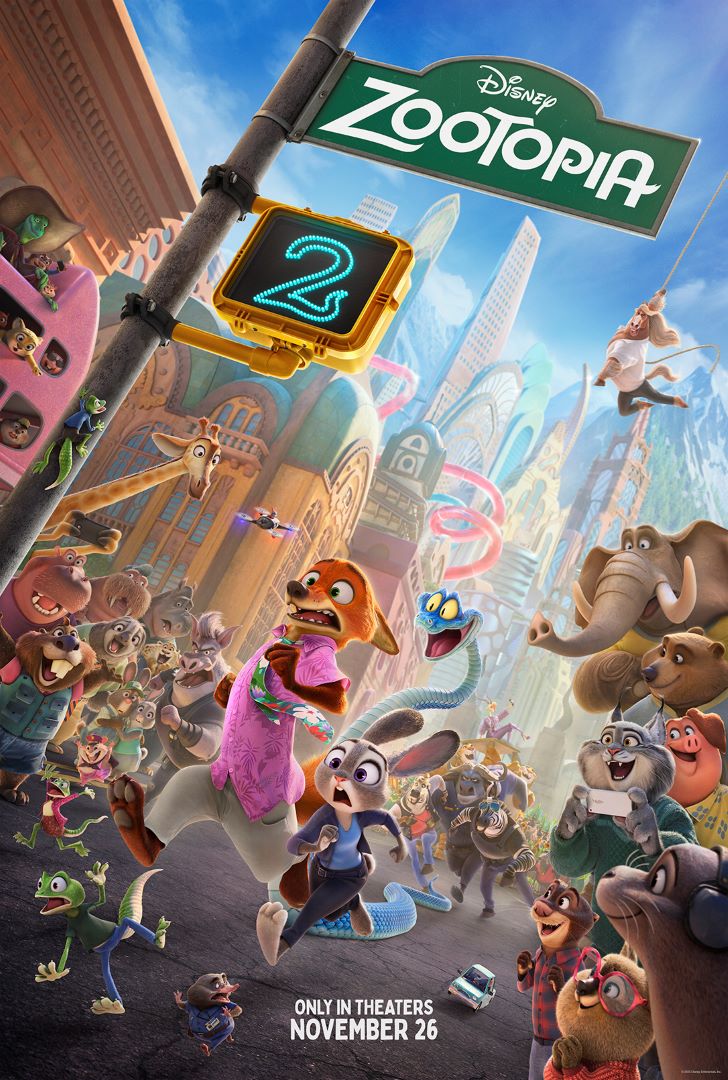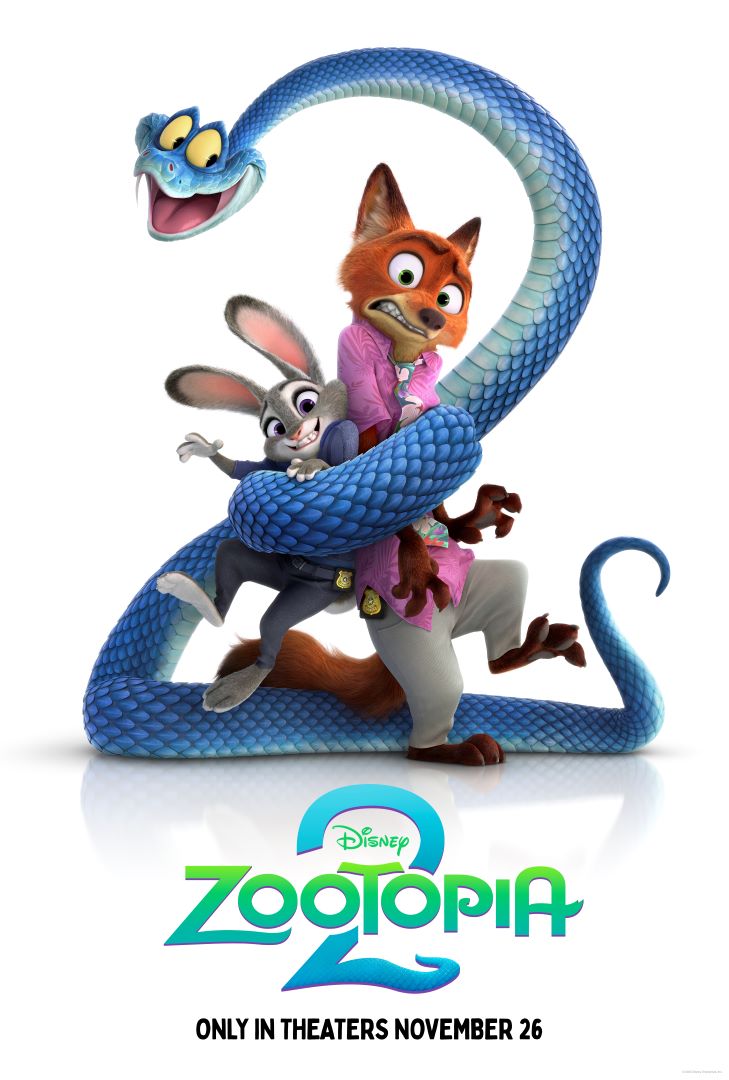Tyler Kupferer, a Purdue Polytechnic alumnus of the computer graphics technology program (CGT), has spent more than a decade building a career at Walt Disney Animation Studios. After attending the Savannah College of Art and Design for his Master’s degree in animation, Tyler started as a layout trainee on Frozen. In the journey that followed, he worked his way up at Disney and is now the Director of Cinematography - Layout on Zootopia 2, premiering on November 26 of this year.
In this piece, lightly edited for clarity, Kupferer spoke to his alma mater about his journey—from making independent films as a teenager to leading cinematography on an internationally-distributed animated feature—and how his time at Purdue shaped his path.
Purdue Polytechnic: Your interest in movie-making goes at least as far back as your time at Purdue, where you were in charge of nearly everything on your own independent films. Over almost two decades, this has ultimately led to a high-level creative leadership role on Zootopia 2, a production operating at an astounding scale. What has that journey been like?
Tyler Kupferer: It has been an interesting exercise. I was fortunate that I started filmmaking with the philosophy of, "you don't need anybody's permission." I was a teenager right when digital filmmaking was taking off. Suddenly, you could steal your parent's digital camera and crack open [Adobe] Premiere 3.0 and actually make a little movie. When I got to Purdue, I used that as a jumping-off point. If I just decide to make a movie, I can make a movie! And anyone who wants to come along can join the effort.
That gave me a lot of space to develop an internal sense of taste and self-confidence. If it's your own film, your voice is the only one you have. That helped me a lot, because in my current job, requests for decisions are coming at you every minute of every day. You have to be ready to make a decision continuously, and you don't have time to waffle.
You started at Disney as a layout trainee. What did that path look like after you finished your education?
I had finished my undergrad at Purdue and finished grad school, so I was done with seven years of college. I did a little bit of professional work out here in Los Angeles on live-action movies doing pre-visualization, and that gave me a portfolio. The apprentice program here is made for people who are fresh out of college but haven't gotten their foot in the industry yet.
It's a nice program where you're not actually working on any of the projects yet. You get paired up with mentors and spend a couple of months doing practice assignments and learning from them, so the pressure isn't crushing down on you. You can just take time to make mistakes, ask questions, and play with things. That was instrumental for me. After that, I got rolled onto my first movie, which was a little film called Frozen.
That is wild!
It was, actually, because no one really had expectations. They didn't know how it was going to turn out, or what it was going to be. But that was when I got the call. “Yeah, we're going to have you come on as apprentice, hopefully eventually rolling onto Frozen.” And I just went in thinking, “I don't know what that movie is. A sequel to Tangled? Who knows?” Seeing it go on to such notoriety taught me an early lesson, that you can’t predict the success of anything in this business, and have to put your best into every project you work on.
You had some experience outside of your CGT major at Purdue, taking coursework in Organizational Leadership and even participating in the President’s leadership class as a freshman. How did that early focus on leadership influence your career path?
That whole sense of "what does it mean to be a leader" was instilled within me the first week I got to Purdue. I took several classes in leadership in my later years there, and I always saw myself that way. I wanted to formally study it, not just be a leader, but academically engage with the concepts. By the time I was done at Purdue, I knew I wanted to be a creative leader.
On the creative side, you have to come up from the technical end of the craft because you have to understand why you're giving people creative notes. I knew if I wanted to be a creative leader, I had to become a master at whatever craft I was giving feedback on.
But I almost had to put that to the side for a while and I said to myself, “Now I’m just going to learn about what it means to be one of the greatest layout artists in the world.” That's what led me to go to grad school to hone the artistic side of things. By the time I finished my Master's, I decided 3D cinematography was what I wanted to focus on. I came into Disney with the mindset that I had a ten-year journey ahead of me to master the craft.
When did you decide that you wanted to be one of the greatest in that field?
For a lot of my time at Purdue I was mostly focused on web development, and I worked at one of the big web development firms in Indianapolis. But for my senior project in computer graphics technology, I just made a whole film—like, that was my capstone for computer graphics. And by that point I knew, “I want to make animated movies.” But I knew that if I was going to be a creative leader, I needed to become a master at whatever craft it is that I’m trying to lead.
Being the Director of Cinematography in animation must present a great deal of technical challenges that aren’t necessarily present in live-action, so how do you balance the artistic vision with the industry-standard tools you now use?
From a tool perspective, that's almost entirely figured out for us. We've got a very customized version of Maya that works like a Swiss Army knife; it can basically do anything you want. The more challenging question is always, "What is the thing we're creating?"
Part of our job is to interpret what the writers have written and what the storyboard artists have drawn. In our kickoff meetings for a new sequence, I made a big effort to focus on visual problem-solving. I don't just want to know what happens in the scene; I want to know emotionally, thematically, what is the beginning, middle, and end, and why does it matter? That allows me to answer the question, "How are we visually going to tell that story?"
Our department is asking, "How are we telling the story from the way that the scene is composed, based on the elements within the scene, the editing, and the visual style?" Whether we're using tight shots to feel claustrophobic or wide shots to feel like a character is lost, we're asking how we can embed emotion in every single second of the film.
Looking back at your time at Purdue, was there an early mentor who pointed you in the right direction or gave you guidance that stuck with you?
Bar none, my biggest influence at Purdue was a professor named Kellen Maicher [who has since done a lot of amazing work at various institutions in Ohio]. I did an independent study with him, and he was our sponsor for our capstone course. But more than anything, there was a very specific conversation: I had a full-time job offer from a multimedia company in Indianapolis after graduation, and I was talking to him about whether I should take it, or go to grad school to try and break into film. I was worried about the cost and the risk.
He looked at me and said, "Look, you have more freedom right now than you will ever have in the rest of your life. You're not married, you don't have kids, you don't have debt. Go do whatever you need to do right now, because this is the most freedom you're ever going to have."
I was like, "Oh, he's right." It gave me the confidence to throw caution to the wind and go try to go to film school. It worked out, and I'm glad he challenged me in that way. He also showed me how you have to set high standards for yourself. If you want to set a higher bar, you can. It just forces you to ask yourself, "What do I need to do if I actually want to hit that bar?" That has stuck with me as well.
After all this time and success, what is it that continues to drive you?
I just keep saying, I just want to make cool movies. So as long as there's places and opportunities to do that, I will follow them.
Zootopia 2 premieres on November 26 in the U.S. It is the follow-up to the original 2016 film, which grossed over $1 billion worldwide and won that year’s Oscar for Best Animated Feature among numerous other accolades. In addition to reprising protagonists Judy Hopps (Ginnifer Goodwin) and Nick Wilde (Jason Bateman), Zootopia 2 boasts an incredible roster of talent playing an entertaining and diverse cast of new characters.
Additional information
